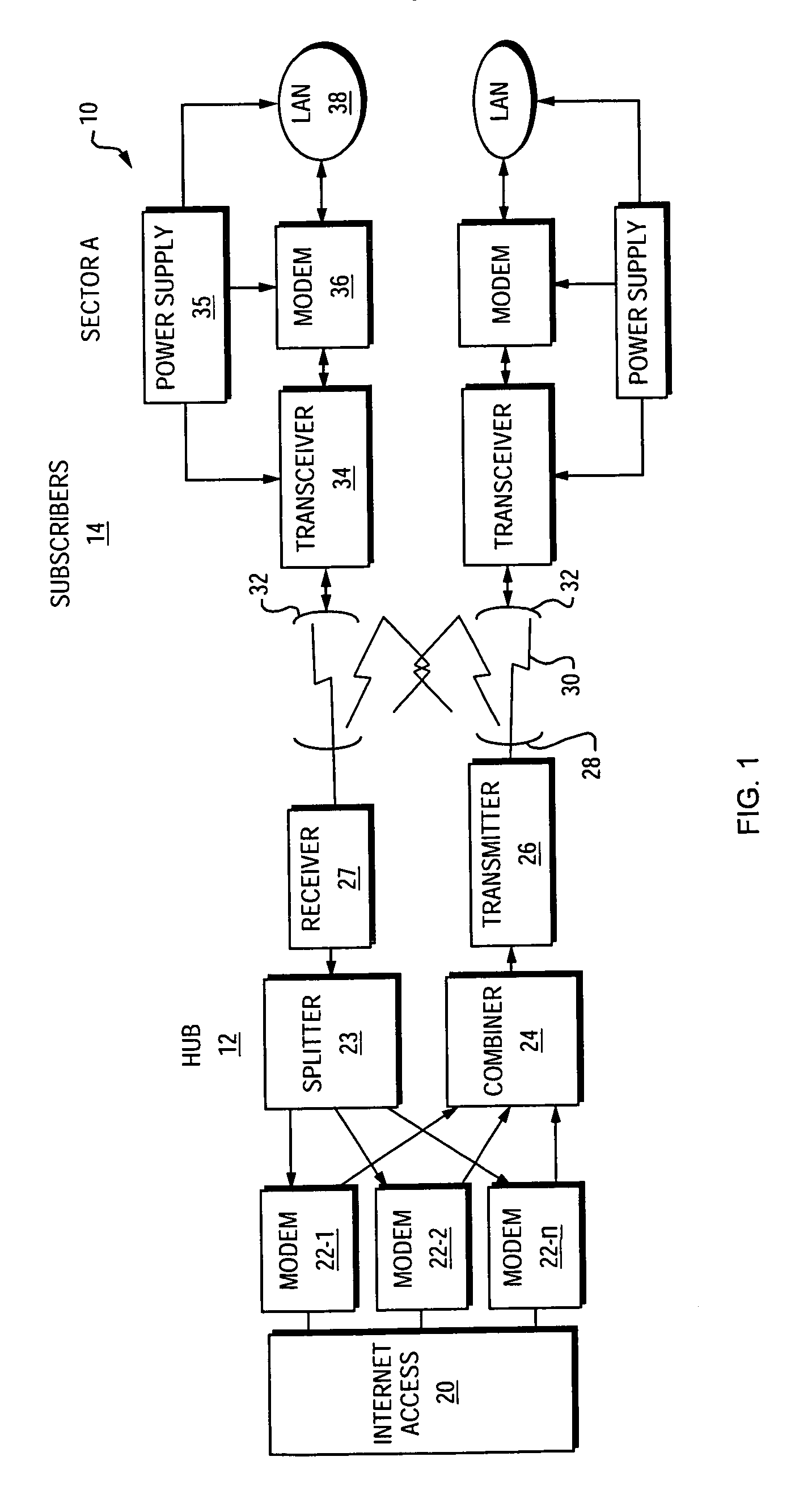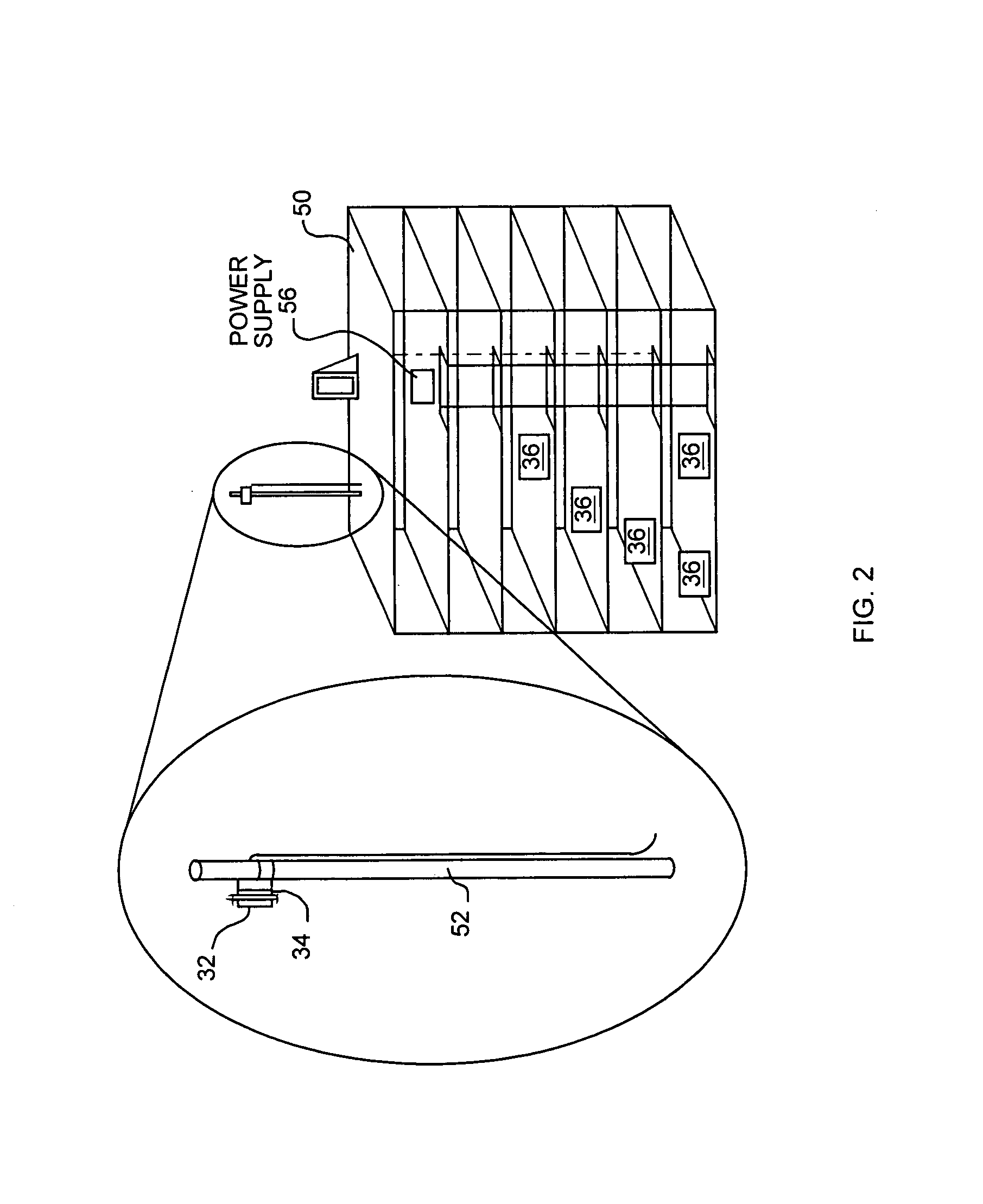Transreflector antenna for wireless communication system
a technology of wireless communication system and reflector antenna, which is applied in the direction of transmission, broadcasting with distribution, substation equipment, etc., can solve the problems of increasing the amount of interference from one hub to the other, complex cell layout, and the design of lmds systems
- Summary
- Abstract
- Description
- Claims
- Application Information
AI Technical Summary
Benefits of technology
Problems solved by technology
Method used
Image
Examples
Embodiment Construction
[0030]FIG. 1 is a block diagram of a system 10 for providing a high speed direct line of sight wireless data service such as Local Multipoint Distribution Service (LMDS) using millimeter-wave frequency radio signals for a physical layer medium. The system 10 consists of equipment at a hub location 12 as well as equipment at multiple subscriber locations 14. It should be understood that the subscriber units 14 may individually be located in a particular sector of a cell to provide support for a greater number of subscribers within a given cell using a limited number of carrier frequencies. In the illustrated system 10, multiple subscribers are provided with a high speed data service to provide access to the Internet.
[0031]The equipment at the hub 12 consists of a connection to a point-of-presence (POP) into the network or other Internet access device 20, and multiple modems 22-1, 22-2, 22-n. In the transmit (e.g., forward link) direction, the modems 22 convert baseband digital signal...
PUM
 Login to View More
Login to View More Abstract
Description
Claims
Application Information
 Login to View More
Login to View More - R&D
- Intellectual Property
- Life Sciences
- Materials
- Tech Scout
- Unparalleled Data Quality
- Higher Quality Content
- 60% Fewer Hallucinations
Browse by: Latest US Patents, China's latest patents, Technical Efficacy Thesaurus, Application Domain, Technology Topic, Popular Technical Reports.
© 2025 PatSnap. All rights reserved.Legal|Privacy policy|Modern Slavery Act Transparency Statement|Sitemap|About US| Contact US: help@patsnap.com



